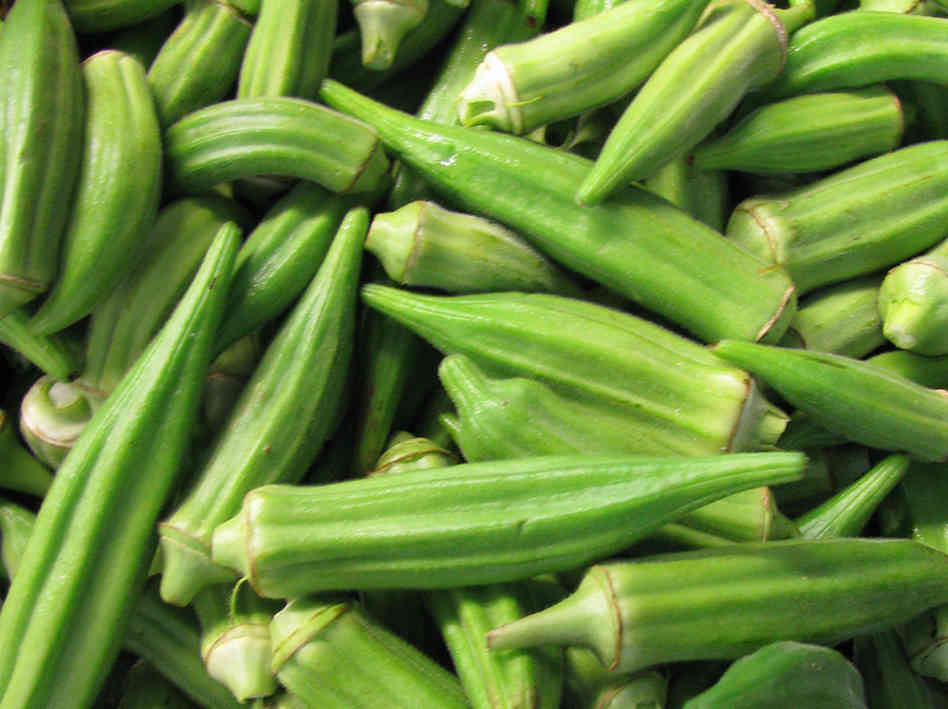Exploring Okro: The Nutritional Powerhouse And Culinary Delight
Okro, also known as okra or lady's finger, is a vibrant green vegetable that has gained popularity across various cuisines worldwide. This vegetable, with its unique texture and flavor, is not only a culinary delight but also a nutritional powerhouse packed with health benefits. In this article, we will delve deep into the world of okro, exploring its origins, nutritional value, culinary uses, and health benefits, as well as tips for growing and preparing this remarkable vegetable.
Throughout history, okro has been a staple in many cultures, particularly in African, Middle Eastern, and Southern U.S. cuisines. Its adaptability in dishes, from soups to stews, and its ability to thicken recipes make it a favorite among home cooks and professional chefs alike. As we navigate through this comprehensive guide, you'll discover why incorporating okro into your diet can be a delicious and healthy choice.
Whether you're a seasoned cook or a curious food enthusiast, understanding the versatility of okro can inspire you to experiment with new recipes and flavors. Join us as we uncover everything there is to know about okro, from its nutritional profile to its culinary applications, ensuring you can make the most out of this incredible vegetable.
Table of Contents
- Biographical Overview of Okro
- Nutritional Value of Okro
- Culinary Uses of Okro
- Health Benefits of Okro
- Growing Okro at Home
- Preparing Okro for Cooking
- Delicious Okro Recipes
- Conclusion
Biographical Overview of Okro
Okro, scientifically known as Abelmoschus esculentus, belongs to the Malvaceae family. It is believed to have originated in Ethiopia and has been cultivated for thousands of years. Today, it is grown in warm climates around the world, particularly in Africa, Asia, and the Southern United States. The plant can reach heights of 4 to 6 feet and produces elongated, green pods that are harvested before they mature.
| Property | Details |
|---|---|
| Common Names | Okra, Lady's Finger |
| Scientific Name | Abelmoschus esculentus |
| Family | Malvaceae |
| Origin | Ethiopia |
| Culinary Uses | Soups, Stews, Frying |
Nutritional Value of Okro
Okro is renowned for its impressive nutritional profile. Below are some key nutrients found in 100 grams of raw okro:
- Calories: 33
- Carbohydrates: 7.5g
- Protein: 2g
- Fat: 0.2g
- Fiber: 3.2g
- Vitamin C: 23mg
- Vitamin K: 31.3mcg
- Folate: 60mcg
- Magnesium: 57mg
These nutrients contribute to okro's various health benefits, making it an excellent addition to a balanced diet.
Culinary Uses of Okro
Okro is a versatile vegetable that can be used in numerous dishes. Here are some popular culinary applications:
- Soups and Stews: Okro is commonly used in traditional dishes like gumbo, where its mucilaginous texture acts as a natural thickener.
- Fried or Sautéed: It can be sliced and lightly fried or sautéed with spices for a delicious side dish.
- Pickled: Okro can be pickled for a tangy snack or condiment.
- Salads: It can be added to salads for a crunchy texture.
Health Benefits of Okro
Incorporating okro into your diet can yield several health benefits:
1. Rich in Antioxidants
Okro contains powerful antioxidants, including flavonoids and polyphenols, which help combat oxidative stress and reduce inflammation in the body.
2. Supports Digestive Health
The high fiber content in okro promotes healthy digestion, aiding in regular bowel movements and preventing constipation.
3. Regulates Blood Sugar Levels
Studies suggest that okro may help lower blood sugar levels, making it beneficial for individuals with diabetes.
4. Boosts Heart Health
Okro is low in cholesterol and saturated fat, making it heart-friendly. Its fiber content can also help lower cholesterol levels.
Growing Okro at Home
If you're interested in growing okro, here are some essential tips:
- Climate: Okro thrives in warm climates with plenty of sunlight.
- Soil: Well-drained, fertile soil is ideal for okro plants.
- Watering: Regular watering is crucial, especially during dry spells.
- Harvesting: Harvest pods when they are young and tender for the best flavor.
Preparing Okro for Cooking
To prepare okro for cooking, follow these simple steps:
- Wash okro pods thoroughly under running water.
- Trim the ends and slice them according to your recipe.
- For soups and stews, you can leave them whole or cut them into rounds.
Delicious Okro Recipes
Here are a few mouth-watering okro recipes to try:
- Okra Gumbo: A classic dish featuring okro, spices, and proteins such as shrimp or chicken.
- Sautéed Okra with Garlic: Quick and easy, this dish highlights the natural flavors of okro.
- Pickled Okra: A tangy treat that can be enjoyed as a snack or condiment.
Conclusion
Okro is more than just a vegetable; it is a culinary gem packed with nutritional benefits. From its rich history and versatility in the kitchen to its impressive health benefits, okro deserves a prominent place in your diet. We encourage you to explore this vegetable further, whether by trying new recipes or even growing it in your garden.
Share your thoughts in the comments below, and don’t forget to share this article with fellow food lovers! For more recipes and healthy eating tips, be sure to check out our other articles.
Thank you for reading, and we hope to see you back on our site soon!
Emma Zia D'Arcy: A Rising Star In The Entertainment Industry
Michael Burry: The Visionary Investor Behind The Big Short
Exploring The Fascinating Connection Between Pinocchio And Shrek


